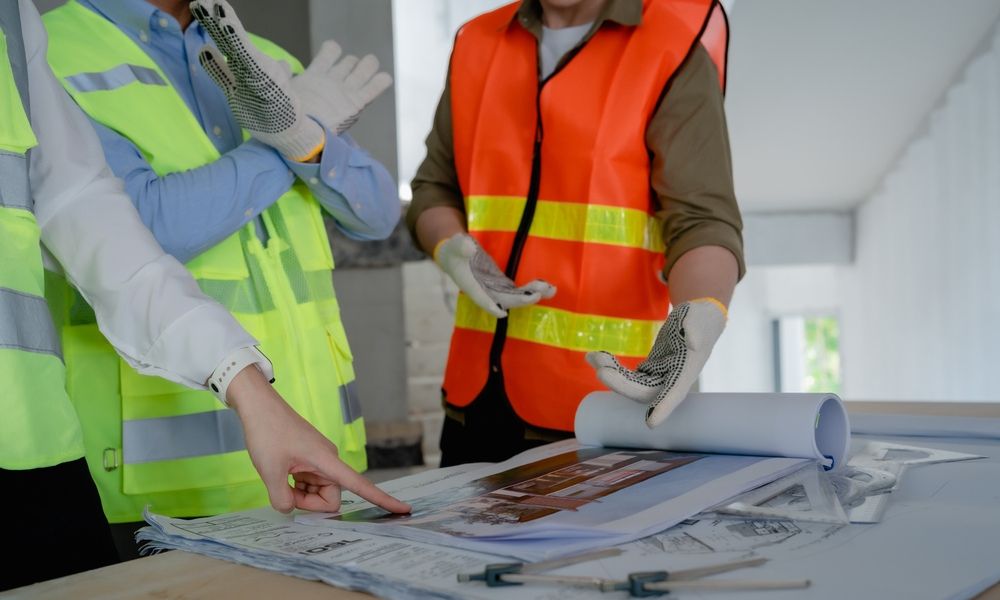In the world of construction estimating, terms like “material takeoff” and “quantity takeoff” are frequently used, often interchangeably. However, while these terms may seem similar, they refer to distinct processes in the construction planning phase. Understanding the differences between material takeoff and quantity takeoff is crucial for accurate estimating, budgeting, and project management.
We’ll explore the unique roles of material takeoff and quantity takeoff, the key differences between the two, and when to use each method.
What is Material Takeoff?
Material takeoff (MTO) is the process of identifying, listing, and quantifying the raw materials required for a construction project. The purpose of a material takeoff is to determine what materials are needed and in what quantities, ensuring the project has adequate resources to proceed.
Material takeoff typically includes basic construction materials like concrete, steel, lumber, drywall, and paint. It does not usually account for labor, equipment, or indirect costs, focusing solely on the materials required for the physical structure.
Key Elements of Material Takeoff:
- Raw Material Quantities: Measures of materials like concrete, wood, steel, and insulation.
- Measurement Units: Recorded in units such as cubic meters, square meters, or linear feet, depending on the material.
- Direct Link to Project Plans: Requires a detailed review of architectural plans and blueprints to identify specific material needs.
What is Quantity Takeoff?
Quantity takeoff (QTO), on the other hand, is a broader process that includes the measurement and quantification of all resources required for a project. Unlike material takeoff, quantity takeoff can encompass labor, equipment, and other resources necessary to complete the project. It provides a more comprehensive view of the project’s needs and often includes cost estimation as part of the process.
Quantity takeoff is typically conducted by quantity surveyors or estimators, who use detailed calculations and measurement techniques to ensure that all aspects of the project are accounted for.
Key Elements of Quantity Takeoff:
- Total Resource Quantities: Includes materials, labor, and equipment requirements.
- Cost Estimation: Often linked to budgeting and cost estimation processes.
- Detailed Project Analysis: Encompasses all project aspects, providing a complete picture of project needs.
Material Takeoff vs. Quantity Takeoff: Key Differences

Now that we understand the basics of each process, let’s look at the key differences between material takeoff and quantity takeoff:
| Aspect | Material Takeoff | Quantity Takeoff |
| Scope | Focuses solely on raw materials | Includes materials, labor, equipment, and costs |
| Purpose | Determines the types and amounts of materials | Provides a complete resource estimate for budgeting |
| Personnel | Typically done by estimators | Conducted by quantity surveyors or specialized estimators |
| Measurement Units | Specific to material types (e.g., cubic meters) | Broader measurements, including hours for labor |
| Relation to Costing | Limited to materials; does not include costs | Closely linked with cost estimation |
| Detail Level | Detailed for materials | Detailed for all project aspects |
When to Use Material Takeoff
Material takeoff is typically performed during the initial stages of project planning, often before a detailed budget is developed. It’s best used when:
- Estimating Raw Material Costs: If the primary focus is on calculating the amount and cost of materials, a material takeoff will suffice.
- Early-Stage Planning: In the early planning phases, material takeoff provides a quick way to gauge material needs.
- Creating Purchase Orders: For procurement purposes, material takeoff allows for a targeted list of materials to be purchased.
Examples of Projects Suitable for Material Takeoff:
- Small residential projects where labor and equipment are predictable.
- Simple renovations or additions where material needs are the main consideration.
- Projects with standard material requirements and limited complexity.
When to Use Quantity Takeoff
Quantity takeoff is more suited to complex or large-scale projects where a detailed resource estimate is essential. Use quantity takeoff when:
- Preparing a Detailed Project Budget: For large projects, quantity takeoff provides a more comprehensive breakdown of costs and resources.
- Complex Construction Projects: In commercial or industrial projects, labor and equipment are significant cost factors, making quantity takeoff essential.
- Comprehensive Estimation Needs: When a project requires a full analysis of all resources and costs, quantity takeoff is the preferred method.
Examples of Projects Suitable for Quantity Takeoff:
- Large commercial or industrial builds with multiple labor and equipment requirements.
- Infrastructure projects like roads or bridges, where equipment costs are high.
- Custom or complex structures that require tailored resources and detailed cost analysis.
Tools for Material Takeoff and Quantity Takeoff
Both material takeoff and quantity takeoff can be performed manually, but using digital tools can improve accuracy and efficiency. Here are some popular tools used in the industry:
Bluebeam Revu:
Ideal for material takeoff, Bluebeam allows users to measure materials directly from PDF drawings. It provides various measurement tools and markup options.
PlanSwift:
PlanSwift is widely used for both material and quantity takeoffs. It offers quick measurement capabilities, as well as cost estimation features for quantity takeoff.
Kubla:
This software specializes in earthworks takeoff and is ideal for civil projects. It’s particularly useful in quantity takeoff where excavation and grading are required.
CostX:
Designed for quantity surveyors, CostX is a comprehensive tool that combines quantity takeoff with cost estimation, making it ideal for large, complex projects.
These tools streamline the takeoff process, reduce the potential for human error, and make it easier to revise takeoffs when project specifications change.
Advantages of Distinguishing Between Material Takeoff and Quantity Takeoff
Understanding the differences between material takeoff and quantity takeoff offers several advantages for construction professionals:
- Enhanced Project Planning: Knowing when to use each type of takeoff helps in better project planning and budgeting.
- Accurate Cost Estimation: By using the appropriate takeoff, estimators can produce more accurate cost estimates, reducing the risk of budget overruns.
- Optimized Resource Management: Clear distinctions allow for efficient resource allocation, particularly in large or complex projects.
Whether you’re a project manager, quantity surveyor, or estimator, recognizing these differences will help you choose the right approach, improving project outcomes.
Common Challenges in Material and Quantity Takeoff
Both material takeoff and quantity takeoff come with unique challenges:
- Material Takeoff Challenges: Ensuring accuracy in measurements, staying updated with project changes, and coordinating with procurement.
- Quantity Takeoff Challenges: Managing complexity in large projects, handling diverse resources, and balancing labor and equipment costs with material needs.
To overcome these challenges, consider investing in training, using digital tools, and collaborating closely with other project stakeholders.
Conclusion
While material takeoff and quantity takeoff share similarities, each serves a distinct purpose in construction estimating. Material takeoff focuses on identifying raw materials, making it ideal for straightforward projects and early-stage planning. Quantity takeoff, however, provides a comprehensive resource breakdown, including labor, equipment, and costs—perfect for large or complex projects.
By understanding these key differences, you’ll be able to choose the most suitable approach for your project needs, whether you’re preparing a simple renovation budget or managing a large-scale commercial build.
Enhance Your Estimating Skills with Our Quantity Surveying Course
Ready to master material and quantity takeoff techniques? Our Online Quantity Surveying Course will equip you with the skills needed to excel in construction estimating. From material takeoff basics to advanced quantity surveying methods, this course offers hands-on learning and industry insights to elevate your career.
Enroll Now in Our Quantity Surveying Course and take the first step toward becoming a skilled construction estimator!




